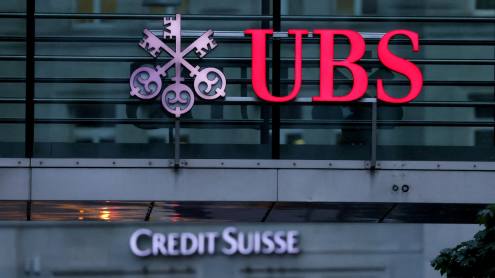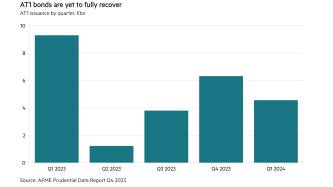Santander Central Hispano (SCH) and BBVA, the two Spanish banking behemoths, have discovered The Client. Put simply, they both appear to have realised that getting a larger share of wallet of existing clients is the way forward. However, this is a strategy – often called cross-selling – that most banks in the developed world have found rather more difficult to implement than appears at first sight. It is also one born of the fact that Latin American earnings have been problematic in the past two years, so investors welcome a renewed focus on Spain.
“In a merger you forget the client so you have to put the emphasis back on the client. The idea is to regain market share and improve services which had declined,” says Enrique García Candelas, head of retail banking at SCH. Both banks have seen their double digit market shares drop as a result of their respective mergers. “Our strategy is to make the client more satisfied, not to sell more products,” he adds, alluding to the bank’s reputation for being product-driven.

Enrique García Candelas: ‘Our strategy is to make the client more satisfied, not to sell more products’
Servicing strategy
Having made 10,000 staff redundant in the past few years, SCH has now recruited 600 new staff who its believes will be better at servicing its clients. It has ground to make up: the average stay of branch managers at Banco Popular, Spain’s number one bank in terms of profits on average capital (see page 24 for profile of chairman Javier Valls), is eight years versus less than two years at SCH, partly because it closed 1600 branches and rotated personnel while it was busy with its merger.
The story from BBVA sounds remarkably similar. “My concern is the client,” says Julio López, head of retail banking at BBVA. Investors say: ‘I know you make money with an ROE [return on equity] of more than 25% but for how long can you keep it up?’ There is a need to personalise things, to improve the financial dialogue with clients and the experience of the user. It is not enough just to be innovative,” he says.
BBVA now has 150 redesigned branches with longer hours and wants to increase that to 450 in two years, while training its staff in how to be financial advisers. The bank is investing E360m in this process. It is seeking to increase its share of wallet from 55% to 65% by December 2005.
In the third quarter, says the bank, loans as well as customer funds improved, with the consequent impact on margins. In the year to end September, retail banking in Spain and Portugal rose 0.5% to a net attributable profit of E914m on the back of innovative marketing with the launch of fixed rate mortgages, products tailored for small and medium size enterprises (SMEs) and especially with a guaranteed-capital stockmarket fund.
Product growth
High street banking in Spain has changed during the past few years: 98.7% of the population now has a bank account and there is more than one branch per 1000 working-age people in all the Spanish regions, a very high level of coverage. The main opportunities, therefore, do not lie in capturing new clients. Instead, the growth in gross domestic product (GDP) – up 36% to $653bn in the past 10 years – has led to a large increase in clients being able to buy more sophisticated products, having graduated from the lower segments of the market to medium or high. As a result, while in 1994 53% of Spanish households only had deposit accounts, this fell to 38% in 2001. More of the population now has shares, funds, insurance and other products.
And there remains enormous potential, especially as GDP per capita is still only 85% of the EU average. Other comparative measures also show there is ground to cover: 67% of Spaniards still use cash for payments of more than E100 versus an EU average of 47%, and 69% of Spanish household wealth is invested in property (rather than shares and other financial instruments), which is more than double that of Germany and the UK.

Julio López: ‘There is a need to personalise things, to improve the financial dialogue with clients’
Battle against paralysis
An increasingly wealthy middle class and a personalised service for the mass affluent – any client with more than E60,000 at BBVA will now get a personalised assessment – sounds like a good growth recipe. But savings banks like La Caixa and institutions like Banco Popular have taken advantage of the merger-related paralysis of the two big banks to steal clients. Also, turning around the culture of large institutions is a Herculean labour. Top executives may devise the new strategy, but getting the troops on the ground to buy-in is a different matter.
Another concern is the huge growth in mortgages. About 50% of new products being sold in Spain are mortgages as consumers take advantage of record low interest rates and double-digit increases in property prices. Banks argue that there will be a slowdown in the property market but they insist that characterising it as a property bubble is an exaggeration.
Instead, SCH and BBVA are counting on the bottom of the interest rate cycle having been reached, so that a drop in mortgages will be offset by a wider net interest margin as well as increased sales of other investment products, assuming that confidence in markets returns.
European revival
Still, interest rates are not expected to shoot up because a revival of EU growth is only just starting.
“We all have to reinvent ourselves as we are working with interest rates of 2%,” says Mr López. “We sell 3.7 products per client and want that at 4.5 by December 2005. But we don’t sell products; we cover needs. What matters is not how many credit cards a client has, it is whether they use ours the most.”
In the meantime, though, SCH points out it brought in revenues of E7bn in the year to October through various guaranteed-capital fund campaigns. Its net attributable income for retail for the Iberian peninsula in the first nine months of the year was E1147m. The bank is undertaking a major push on the insurance side: from E27m in revenue from this business in 2002, the bank is aiming for E140m in 2004.
Both banks are also looking for growth in SMEs. Employment in Spain is being created in companies that often have less than 10 employees. This includes small legal firms, medical bureaus and others, which have yet to take full advantage of leasing and other services the banks can render. “Only 11% of those micro businesses consume asset products, so there is a huge opportunity,” says Mr López.
Competition, however, is intense. “It is true that all banks are saying they are going into small and medium-sized companies,” says Mr García Candelas. “But there is room for us all.”
SCH lost 60,000 companies in recent years as a result of forcing them to bank only in certain branches. It has now reversed that policy and hopes to recover and make up lost ground.
Both banks have changed their emphasis as they talk about the client. They have the advantage of a domestic market that is growing, with scope for selling products to the mass affluent, to the Spanish consumer who is becoming wealthier and to SMEs. Only time will tell whether their strategies will be successfully implemented.











